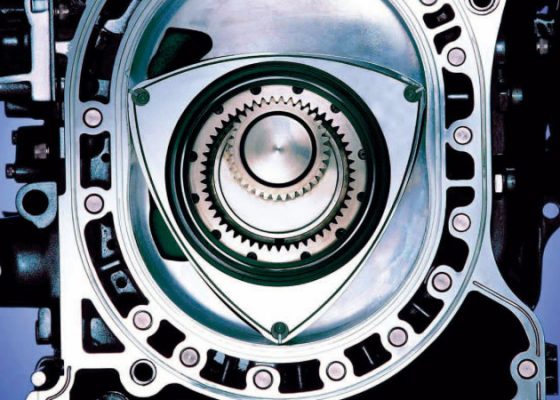Review: 2012 Buick Regal eAssist
By Chris Haak
As one of the first journalists to drive the Buick Regal on US soil back in 2010, I was impressed by the car’s taut handling, above-average interior, and attention to detail. In particular, I was most smitten by the Regal Turbo, which adds a sizable dollop of horsepower and a much-improved power delivery over the base 2.4 liter four.
For 2012, the Regal lineup grows by two, with a performance variant, the GS, taking the top spot with its 270 horsepower 2.0 liter turbo four, and the new eAssist, which we’re here to talk about today, assuming the model’s fuel-economy leadership crown.
 For those who may recall the likes of the Saturn VUE, Saturn Aura, and Chevy Malibu hybrids, the technology behind the Regal eAssist may sound familiar to you. Rather than using a full hybrid system as Toyota, Ford, and Nissan do – where the electric motor can power the car – the eAssist in the Regal is simply a low-powered (15 horsepower, 79 lb-ft) combination motor/alternator. Consequently, the low power and relatively simple design of the Regal’s eAssist system yields a few things: a lower upfront cost vs. full hybrids (the eAssist option adds just $2,000 to the price of a standard Regal 2.4 liter), about 25% better combined EPA fuel economy, and a bit better off-the-line punch.
For those who may recall the likes of the Saturn VUE, Saturn Aura, and Chevy Malibu hybrids, the technology behind the Regal eAssist may sound familiar to you. Rather than using a full hybrid system as Toyota, Ford, and Nissan do – where the electric motor can power the car – the eAssist in the Regal is simply a low-powered (15 horsepower, 79 lb-ft) combination motor/alternator. Consequently, the low power and relatively simple design of the Regal’s eAssist system yields a few things: a lower upfront cost vs. full hybrids (the eAssist option adds just $2,000 to the price of a standard Regal 2.4 liter), about 25% better combined EPA fuel economy, and a bit better off-the-line punch.
 Aside from a few hybrid-like quirks to its driving experience, driving the Regal eAssist is mostly unremarkable. Those quirks – some of which are good, some of which are not – include auto start/stop, which saves fuel around town, slightly non-linear braking, and the occasional thump when the car’s propulsion system gets confused.
Aside from a few hybrid-like quirks to its driving experience, driving the Regal eAssist is mostly unremarkable. Those quirks – some of which are good, some of which are not – include auto start/stop, which saves fuel around town, slightly non-linear braking, and the occasional thump when the car’s propulsion system gets confused.
I’m always intrigued by auto start/stop systems, considering that with most cars equipped with the systems, you still have to start them the old fashioned way when beginning your journey. The engine cranks way more times when you start it conventionally versus when the car restarts itself when you release the brake at a traffic light. I’m not sure if this is due to the fact that at the initial start, the engine is cold and doesn’t have fuel in the cylinder ready for combustion, or if it’s just to give drivers of such-equipped cars a more “normal” sensation. With that being said, there’s nary a shudder when the Regal eAssist stops and starts; it’s actually a nice period of silence at traffic lights, having no powertrain noise at all.
 The “assist” part of this Regal’s powertrain actually allows the car’s six-speed automatic to stay in a gear for mild speed increases without needing to downshift; the result is a smoother, more seamless power delivery – and soundtrack. Former GM mild hybrids were saddled with a four-speed unit, so the extra ratios help this car improve upon the older generation’s fuel economy numbers.
The “assist” part of this Regal’s powertrain actually allows the car’s six-speed automatic to stay in a gear for mild speed increases without needing to downshift; the result is a smoother, more seamless power delivery – and soundtrack. Former GM mild hybrids were saddled with a four-speed unit, so the extra ratios help this car improve upon the older generation’s fuel economy numbers.
I referred to some thumping sounds a few paragraphs ago. Though not the most sophisticated electrification system on the market, the eAssist’s powertrain controls have to manage the transaxle, gasoline engine, and electric motor in such a way that their operation is as undetectable as possible to the driver and passengers and that efficiency is maximized. There were three occasions during my week with the car when pressing the accelerator a fairly small amount, and not particularly suddenly, resulted in a distinct “thump” sound from the drivetrain. My guess is that the computer just got a bit confused as to what my intentions were, and swung and missed when it guessed.
 Newer lithium ion battery technology gives the Regal eAssist a further leg up against the older-generation GM hybrid offerings, which had nickel metal hydride batteries. Li-ion batteries are more power-dense than NiMH, which allows the eAssist battery pack to consume a relatively small portion of the Regal’s trunk. Their location is obvious, and marked by a stitched-on battery symbol, but small enough that the rear seat still retains most of its pass-through capabilities. The battery pack is air cooled and vents primarily through openings on the parcel shelf.
Newer lithium ion battery technology gives the Regal eAssist a further leg up against the older-generation GM hybrid offerings, which had nickel metal hydride batteries. Li-ion batteries are more power-dense than NiMH, which allows the eAssist battery pack to consume a relatively small portion of the Regal’s trunk. Their location is obvious, and marked by a stitched-on battery symbol, but small enough that the rear seat still retains most of its pass-through capabilities. The battery pack is air cooled and vents primarily through openings on the parcel shelf.
Those first US-spec Regals that I drove – including the Regal Turbo I reviewed last year – were built in Germany by GM Europe. For 2012, all Regals are built in Canada. The change of production venue allowed for a few minor changes. For instance, the Regal lost its European-style fender turn signal repeaters, but gained touchscreen capability on its navigation display. In fact, it also gained newer-generation navigation software, which when combined with the ability to do on-screen inputs, made it much easier to use. However, the display is among the smaller OEM displays (about the size of a portable navigation unit like a Garmin) and it calculates routes rather slowly.
 Two years ago, I was impressed by the Regal’s interior quality, feeling that it likely surpassed that of its key competitor, the Acura TSX. Perhaps a few more years and a few dozen more car reviews under my belt have jaded me. This time, I paid more attention to the shiny, hard plastic that covered the lower half of the dash and door panels. I don’t remember noticing it before, but surely it was present in the earlier German-built Regals. That being said, the seats are excellent in terms of blending comfort and support, and the interior still tops the TSX in terms of materials and appeararance, if not quite in technology. (Buick: where is the Bluetooth streaming audio in a 2012 model year car with new navigation software?)
Two years ago, I was impressed by the Regal’s interior quality, feeling that it likely surpassed that of its key competitor, the Acura TSX. Perhaps a few more years and a few dozen more car reviews under my belt have jaded me. This time, I paid more attention to the shiny, hard plastic that covered the lower half of the dash and door panels. I don’t remember noticing it before, but surely it was present in the earlier German-built Regals. That being said, the seats are excellent in terms of blending comfort and support, and the interior still tops the TSX in terms of materials and appeararance, if not quite in technology. (Buick: where is the Bluetooth streaming audio in a 2012 model year car with new navigation software?)
 Although the “hybrid premium” of $2,000 is a fairly small one, you do give up the higher-end models’ 18 inch wheels in favor of the eAssist’s 17s (paired with low rolling resistance tires). The car looks all right with them, but looks better when it has the larger diameter wheels. I didn’t notice any handling effects of having the harder-compound tires, at least in the normal commute-type driving that I did with the car.
Although the “hybrid premium” of $2,000 is a fairly small one, you do give up the higher-end models’ 18 inch wheels in favor of the eAssist’s 17s (paired with low rolling resistance tires). The car looks all right with them, but looks better when it has the larger diameter wheels. I didn’t notice any handling effects of having the harder-compound tires, at least in the normal commute-type driving that I did with the car.
Aside from perhaps smoother power delivery and a small additional torque reserve, the reason you’d buy this car is for its improved fuel economy. The EPA says it will get 25 MPG in the city and 36 MPG on the highway (vs. 19/31 for the conventional 2.4 liter and 18/29 for the 2.0T automatic). The eAssist’s published 29 MPG combined number is indeed 26 percent better than that of the 2.4 liter’s 23 MPG figure. In looking back at my review of the Regal Turbo, I got 23.1 MPG from that one, which has a 22 MPG combined number. At any rate, I saw between 29 and 30 MPG from a week of mixed driving with an uncharacteristically gentle right foot. That’s at least a 26 percent improvement – roughly the same as what the EPA estimates. I hesitate to compare the economy of two different cars that I may have driven very differently (driving style, where driven, speed, traffic conditions, etc.) and in different seasons (I drove the Turbo in May and the eAssist at the end of December), but the data points are there for your consideration, at least, and they say that eAssist seemed to work for me. It may be worth noting that a Lincoln MKZ Hybrid, though it costs $4,300 more (according to TrueDelta.com), yet returns a full 10 MPG better combined (according to the EPA).
 The final MSRP of the Regal eAssist that we tested was $34,470. That is comprised of a $29,515 base price, $2,000 eAssist system, $1,145 radio with navigation and 7″ color touchscreen display, $1,000 power sunroof, $860 destination charge (!), and a $50 credit for not having turn signal indicators on its mirrors. My advice: forget that it’s a “mild hybrid” and consider this model of the Regal if you’re looking for better (but not outstanding) fuel economy. The bottom line is that the eAssist system does slightly improve off-the-line torque and powertrain refinement. For some buyers, the fuel economy improvement plus the refinement improvement may make the eAssist option worth the price.
The final MSRP of the Regal eAssist that we tested was $34,470. That is comprised of a $29,515 base price, $2,000 eAssist system, $1,145 radio with navigation and 7″ color touchscreen display, $1,000 power sunroof, $860 destination charge (!), and a $50 credit for not having turn signal indicators on its mirrors. My advice: forget that it’s a “mild hybrid” and consider this model of the Regal if you’re looking for better (but not outstanding) fuel economy. The bottom line is that the eAssist system does slightly improve off-the-line torque and powertrain refinement. For some buyers, the fuel economy improvement plus the refinement improvement may make the eAssist option worth the price.
GM supplied the car, insurance, and a tank of gas for this review.


